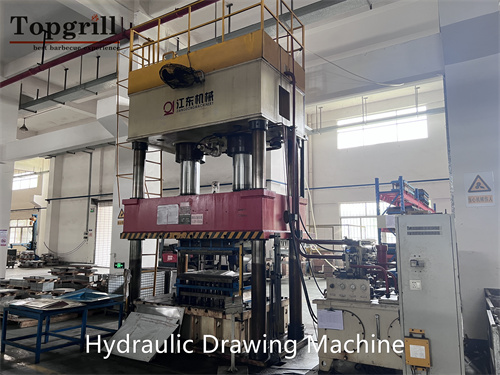What Environmental Protection Measures Does Foshan Topgrill Outdoor Product Co., Ltd. Take During The Production Process?
Production process optimization
Water-saving production process: Use countercurrent rinsing process for material washing, encourage sewage cascade use, and reduce water resource consumption.
Improve condensation recovery efficiency: Use multi-stage gradient condensation method and high-efficiency heat exchange equipment to improve organic solvent recovery efficiency and reduce emissions.
Optimize feeding and discharging methods: The reactor uses bottom feeding or immersion tube feeding, and the feeding and discharging are equipped with sealing devices or negative pressure exhaust and collected to the exhaust gas treatment system to reduce pollution.
Advanced conveying equipment: Use shielded pumps, diaphragm pumps, etc. to replace traditional conveying equipment, and collect and treat the vented exhaust gas in a unified manner to reduce pollution.
Plant environmental management
Anti-seepage, anti-leakage and anti-corrosion measures: Take corresponding measures on the ground of the production workshop, implement dry and wet separation, harden the road site in the factory area, and green other areas to keep the environment clean and orderly.
Clear pipeline settings: All kinds of pipelines are exposed and concentrated in rows or columns along the wall or column, and laid in parallel overhead to avoid disorder.

Environmentally friendly materials and alternatives
Use of environmentally friendly materials: Select environmentally friendly and renewable materials, such as using recyclable plastics or bamboo materials in product appearance parts to reduce dependence on non-renewable resources.
Research and development of alternative materials: Increase investment in research and development, and find alternative materials with similar performance but less environmental impact, such as using aluminum alloy instead of stainless steel in some products to reduce carbon emissions in the production process.
Energy management and efficiency improvement
Application of green energy: Gradually introduce renewable energy such as photovoltaic power generation to partially meet production electricity needs and reduce dependence on traditional energy.
Energy monitoring and management: Through the intelligent energy management system, real-time monitoring and optimization of electricity consumption time and production capacity scheduling, improve energy utilization efficiency, and further reduce carbon emissions.
Waste management and resource recycling
Waste classification and recycling: Establish a waste classification and recycling mechanism, classify and process scraps, thread ends, packaging materials, etc. in the production process, and use them to make small accessories, patchwork products or filling materials to improve resource utilization.
Packaging optimization: Use environmentally friendly packaging materials such as degradable cartons and environmentally friendly honeycomb paper, and design reusable packaging, such as packaging boxes that can be used as storage boxes to reduce packaging waste.
Emission control and pollution control
Advanced waste gas and wastewater treatment system: Equipped with an efficient sewage treatment system, it recycles and purifies more than 95% of water and chemicals, and reuses the treated water in production or other links to reduce water resource consumption. At the same time, the waste gas is collected and treated to remove or decompose harmful substances and reduce air pollution.
Reduce the use of chemicals: Optimize the production process, reduce the use of harmful chemicals, and reduce the content of harmful substances in wastewater.
Product design and life cycle considerations
Eco-design: Incorporate environmental protection concepts into the design stage, such as using ergonomic design to optimize thermal management, improve energy efficiency, and make the product more energy-efficient during use.
Durability and maintainability: Improve product quality and durability, extend product life, and facilitate users to maintain and repair products, reducing resource waste and waste generation.
Employee training and awareness raising
Environmental awareness training: Regularly conduct environmental training for employees to enhance their environmental awareness and professional skills, and ensure that environmental protection measures are strictly implemented during the production process.
Continuous improvement mechanism: Through environmental risk assessment and continuous improvement mechanism, continuously optimize production processes, reduce environmental impacts, and promote the long-term and stable development of corporate environmental protection work.

